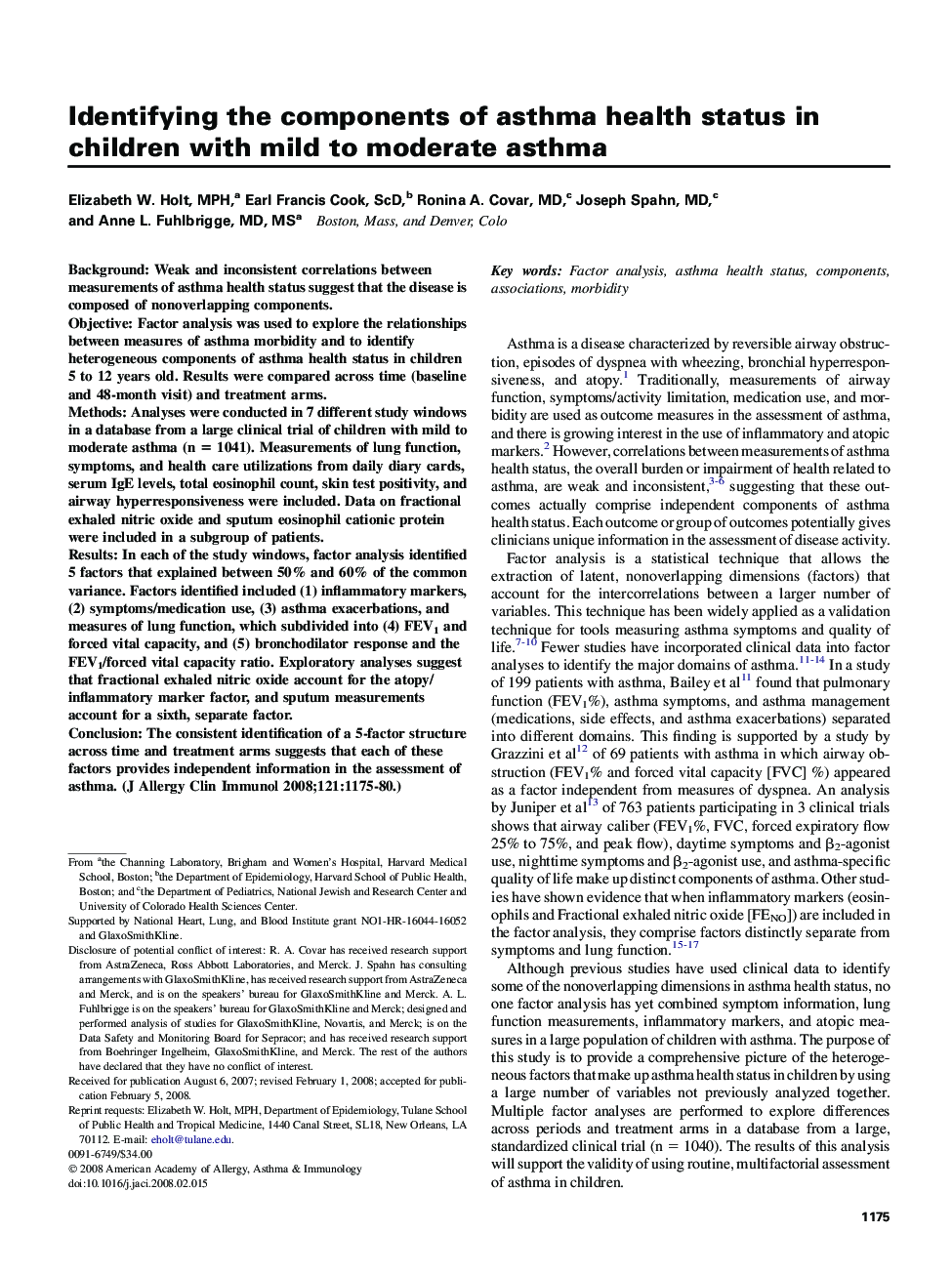| Article ID | Journal | Published Year | Pages | File Type |
|---|---|---|---|---|
| 3201200 | Journal of Allergy and Clinical Immunology | 2008 | 6 Pages |
BackgroundWeak and inconsistent correlations between measurements of asthma health status suggest that the disease is composed of nonoverlapping components.ObjectiveFactor analysis was used to explore the relationships between measures of asthma morbidity and to identify heterogeneous components of asthma health status in children 5 to 12 years old. Results were compared across time (baseline and 48-month visit) and treatment arms.MethodsAnalyses were conducted in 7 different study windows in a database from a large clinical trial of children with mild to moderate asthma (n = 1041). Measurements of lung function, symptoms, and health care utilizations from daily diary cards, serum IgE levels, total eosinophil count, skin test positivity, and airway hyperresponsiveness were included. Data on fractional exhaled nitric oxide and sputum eosinophil cationic protein were included in a subgroup of patients.ResultsIn each of the study windows, factor analysis identified 5 factors that explained between 50% and 60% of the common variance. Factors identified included (1) inflammatory markers, (2) symptoms/medication use, (3) asthma exacerbations, and measures of lung function, which subdivided into (4) FEV1 and forced vital capacity, and (5) bronchodilator response and the FEV1/forced vital capacity ratio. Exploratory analyses suggest that fractional exhaled nitric oxide account for the atopy/inflammatory marker factor, and sputum measurements account for a sixth, separate factor.ConclusionThe consistent identification of a 5-factor structure across time and treatment arms suggests that each of these factors provides independent information in the assessment of asthma.
